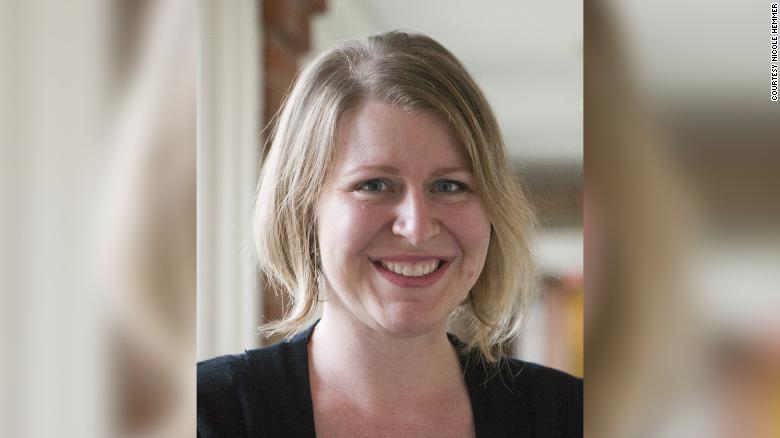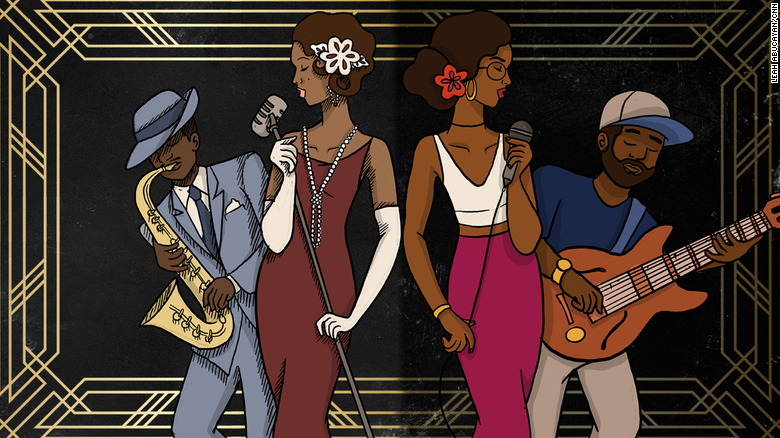As vaccination rates have soared (even with all the new variants and surges adding some uncertainty to the mix) it's become clear that when the lockdowns finally lift, Americans will be primed for a new Roaring '20s, an exuberance expressed in fashion, art, music -- anywhere we can display the kind of manic joy that comes after a year when the world became very small and quiet.
Our Roaring '20s would arrive a century after the end of the last massive pandemic, which occurred alongside a devastating war. The end of these twin crises unleashed a decade of exuberance and experimentation -- and a decade of growing inequality and deepening conservatism. "The war tore away our spiritual foundations and challenged our faith," Ellen Wells Page
wrote, as she explained why she embraced the flapper lifestyle. "We are struggling to regain our equilibrium." As we enter the post-pandemic period, it's worth reflecting on how Americans navigated their reentry in the 1920s, and the ways their newfound vitality fed the era's dramatic cultural and political changes.
But we should also take note of the lessons unlearned in last Roaring '20s. The radical dislocations of the early 20th century did not lead only to progressive expressions of the politics of identity. Many White conservatives were doubling down on their identity, too. The 1920s saw the
resurgence of the Ku Klux Klan in places far from the South (its largest bases were in Indiana and Oregon) and the institution of racist quota laws for immigration.
White fundamentalists passed laws to prevent the teaching of evolution in schools. The United Daughters of the Confederacy went on a monument-building binge,
erecting Confederate statues all across the United States. Life may have been fleeting, but they were going to ensure that their vision of history left a lasting mark on the landscape.
All of this took place against the backdrop of
economic dislocation and staggering inequality. The depression in the farm industry started a decade before the economic crash in 1929, and while the number of millionaires exploded in the 1920s, the gap between rich and poor widened to historic levels.
Which should all seem familiar. Even before the pandemic, the US had been grappling with retrenched economic inequality fed by the unequal recovery from the Great Recession. The rise of White-power violence during the Obama administration grew darker and deadlier under Trump. It did not take a pandemic to surface those issues, though as the rise in anti-Asian hate crimes demonstrates, the pandemic has metastasized them.
What Americans were hungering for
But if the search for normalcy and fear of more loss fed a dark frenzy of racism and greed, it also nurtured a hunger for something new, outlets to express the vibrant energy that came with emerging from years of deprivation and disease. That could be found in the distinctly modern culture of the 1920s, from the flapper style that swapped buns and corsets for bobs and loose-fitting, skin-flaunting dresses, to the renaissance of Black art and music in Harlem, to the
more open gay nightlife in some US cities.
The war and pandemic weren't the only cause: the rise of cities, the migration of Black southerners to the north, and the maturing of the industrial economy all played a role in the formation of this new culture. But the tragedies of the previous decade infused these changes with a kinetic energy that can only come from people who saw lives cut short all around them, and, surviving, swore to live each moment at full-tilt.
Full-tilt can suggest excess, but it can also suggest
aliveness. That latter quality infused the 1920s. Women experimented not only with higher hemlines but sex, speakeasies, and politics. Though activities like dating and petting emerged at different times depending on class and race, in the 1920s young middle-class White women engaged in more petting and premarital sex. And that had a politics, too: in the 1920s, Margaret Sanger worked to secure women's reproductive rights, opening the country's first birth control clinic and founding the American Birth Control League focused less on the young women experimenting with sex and more on poor women desperate to control their family size.
That focus on sex and culture suggested that the women of the 1920s, so eager to consume all the world had to offer, had lost interest in politics. There was reason to think so: it was decades before activists coined the phrase "the personal is political," and women daring to dance in jazz clubs or drive cars were seldom thought of in political terms. And the older forms of women's activism had seemed to disappear.
Suffragist marches appeared to be a thing of the past after the ratification of the 19th Amendment, which secured the right to vote for some women (most Indigenous women and Black women in the South still could not vote). Afterward, White suffrage organizations folded as some activists turned their attention to the Equal Rights Amendment,
while Black women continued the fight for the ballot.
Black women also sought outlets of their own in the
Harlem Renaissance, which captured the vibrancy, and struggles, of Black city life, newly infused with hundreds of thousands of Black southerners who migrated North during the war. Northern cities hummed with the new energy, with Black soldiers returned from Europe and new clubs and salons in brownstones all around Harlem. But if
jazz and poetry were the heart of the Harlem renaissance, anti-lynching movements and Black nationalism were its spine, political movements that flourished not alongside those artforms, but through them.
What the first Roaring '20s can teach us about this one
That fusion of culture and politics is precisely what we should have our eyes open for in the years following the pandemic's end, particularly if we want to put our newfound energies toward something constructive and progressive. There is a kind of demand for life already shuddering through society, expressed perhaps most clearly in the racial justice protests of last summer. But it will also be there in the block parties and album releases and travel sprees and book launches in the coming years, an insistence on being heard and seen that will sprout up in sprays of glittery tulle and in raucous TikTok trends as well as protest marches as grassroots organizing.
To combat both a politics of exclusion and an economics of inequality, we will have to find ways to fold those into the cultural vibrancy of the coming decade. Unlike Americans in the 1920s, we have an administration that, so far, has proven willing to intervene in ways that help those who need it most. But easing inequality in the US will take much more than a massive relief bill. It will require systemic change, from a higher minimum wage and higher corporate tax rates to revitalized unions and reinvigorated voting rights. But it will also require a kinetic sense of connection and community to attract the energy of a post-shutdown world.
There is such a hunger for joy and community and a sense of being fully alive; if we can feed that both with sequins and serious political change, then the 2020s might be a decade of growing opportunity and equality, rather than an era of excess barreling toward collapse.

